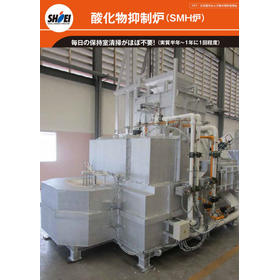The key is how to set processing conditions to avoid intimidating thin-diameter cutting tools! Using OKUMA MULTUS B200 II.
We would like to introduce a machining case of the "throttle valve" that we conducted. Due to the large protrusion amount, when machining the central pocket hole, it is necessary to insert the cutting tool (ball end mill) from the tip of the protrusion. Since the tool length becomes longer, the key point is how to set the machining conditions to prevent the thin-diameter tool from vibrating. The material used is A6061-T6, and it was manufactured at the maximum size that can be handled by MULTUS, which is Φ35×55. 【Case Overview】 ■ Material: A6061-T6 (Aluminum) ■ Size: Φ35×55 ■ Machining Factory: Tokyo Headquarters ■ Remarks: Outer diameter Φ6 dimensional tolerance -0.010 to -0.018 *For more details, please refer to the related links or feel free to contact us.
Inquire About This Product
basic information
For more details, please refer to the related links or feel free to contact us.
Price range
Delivery Time
Applications/Examples of results
For more details, please refer to the related links or feel free to contact us.
Company information
■Processing Range Maximum Work Size | Up to 800 square | Up to φ800 | Length up to 2,000 Main Work Size | Up to X300×Y300×Z300 | Up to φ300 ■Supported Materials Magnesium Titanium Aluminum Stainless Steel Cast Iron Mild Steel & Special Steel Inconel *We are particularly strong in processing magnesium and titanium. ■Processing over 4,000 products annually We have accumulated achievements and know-how that enable us to handle high-precision parts and difficult-to-cut materials across a wide range of industries, including automotive (from commercial vehicles to racing vehicles), robotics, medical devices, defense, and aerospace. ■Thorough quality control with a focus on 1/1,000mm The inspection room temperature is consistently set to 22°C. Inspectors measure each part using their respective three-dimensional measuring machines. Subsequently, multiple checks are conducted by the finishing and shipping personnel to prevent defective products. Additionally, inspection drawings are always attached to the products.



![[Purchase Page] Aluminum A5052 Sheet Material Cutting Medical Mass Production China](https://image.mono.ipros.com/public/product/image/278/2000537208/IPROS77292660390717119366.png?w=280&h=280)

![[CNC Machining Example] A5052 Heat Sink](https://image.mono.ipros.com/public/product/image/e1a/2001055267/IPROS75090757954783046609.png?w=280&h=280)
![[Purchase Page] Stainless Steel SUS410 Cutting Order Efficiency Improvement Kansai](https://image.mono.ipros.com/public/product/image/268/2000537388/IPROS96313305698020700522.png?w=280&h=280)

![[Technology Introduction] The technical capabilities of Antex, capable of large NC lathe machining!](https://image.mono.ipros.com/public/product/image/a1c/2000444226/IPROS76868399426498205776.jpeg?w=280&h=280)


